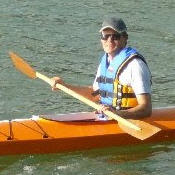I finally got some paint on the hull. The sanding of the first load of exterior bog was completed last week, and the second fill on the underside was hard enough to sand at the weekend. I made a start, but was otherwise engaged and so am now a little more behind.
Sunday was spent fixing a couple of things on the Land Rover to get it through the 6-monthly Warrant of Fitness certification that is required in New Zealand. The relatively straight forward job of changing the power steering belt became an epic due to seized bolts. The other job I knew had pitfalls associated with it. I learnt so much in the process of completing the drop arm ball joint fix that I posted my findings here in the hope of my experience being useful to others tackling the same task.
Anyway, last night I finished sanding the second fill and then I started preparing to paint. I washed the bottom down with a warm solution of liquid sugar soap to degrease, remove the dust and any amine blush (a waxy emission from cured epoxy), then rinsed with plenty of water and allowed the boat to dry.
I then applied a coat of Taubmans UnderProof Acrylic Primer Undercoat. This is a water-based acrylic with what smells like an amount of latex added to prevent bleeding through to the top coat. I'm going to be using Taubmans Living Proof Indoor/Outdoor Acrylic Enamel Gloss as the top coat. The reasons to use house paint rather than marine enamel like I tried for the cockpit interior are twofold. Firstly, the marine enamel requires 24 hours between coats, whereas the acrylic enamel requires only an hour or two. Secondly, the smell of the marine enamel was awful, even with the garage door closed it could be detected on walking passed while the boat dried inside.
Obviously there is a Christmas break coming, and we are off on a family camping trip until after New Year's, so the launch will definitely be in 2009. I'm also pretty certain it will be in January of that year.














































